We shape the grapes correctly

Before you start growing grapes on your personal plot, you should get acquainted not only with the characteristics and characteristics of a particular variety, but also with the process of proper care for it. Pruning is one of the main grape care procedures. Depending on the purpose of pruning and the type of plant, the appropriate type of formation is selected.

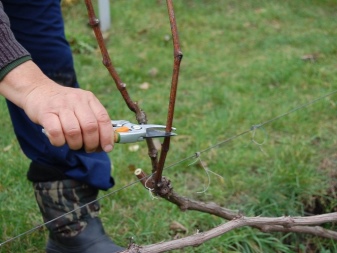
Bush structure
Before you arm yourself with a pruner and start acting, you need to familiarize yourself with the structure of the grape bush. The bush itself is called a liana and grows upward, stretches towards the sun. It has a root system with three root varieties:
- dewy;
- middle;
- calcaneal.
There are also skeletal roots, the very first ones.

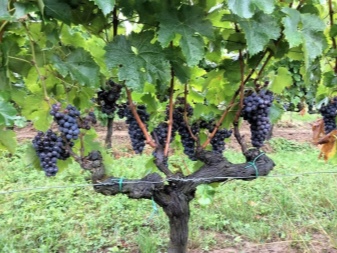
And also its structure includes:
- head;
- sleeves (perennial vine);
- biennial vines;
- annual shoots;
- stepchildren (very young vines).

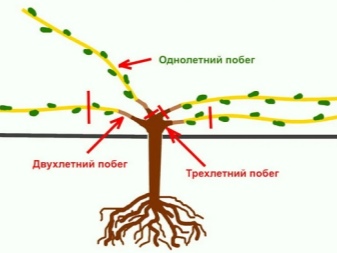
Purpose of the procedure
Pruning is one of the main maintenance procedures. Without it, it is impossible to get a high-quality and good harvest. If you do not prune, the plant will overgrow with unnecessary shoots, there will be very few fruitful ones among them, and over time it will not become at all. All forces will be spent on the development of the vines, and not on the ripening of the crop.
And also, without pruning, the bush will become very vulnerable to disease. Fruits will change size over time and lose their taste. The variety will degenerate and become unsuitable for further cultivation.
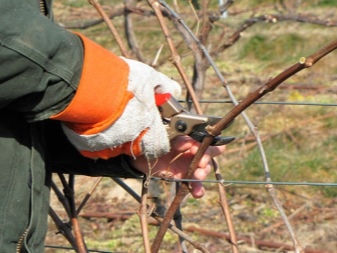
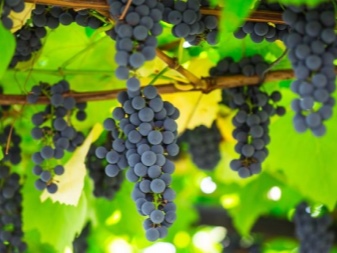
Classification
Depending on the ultimate goal of this plant care procedure, it is divided into 3 types.
- Sanitary (it is performed to heal the bush). Remove bad, broken, damaged or diseased branches. At the same time, good young shoots are left. With this treatment, one should not spare and leave the semi-living parts of the plant. This will eventually lead to the degeneration of the bush. Basically, the procedure is carried out in the fall, before the wintering of plants. Or at the first signs of the disease, in order to protect the entire bush.
- Regulatory (required to increase fruiting, distribute the correct load on the bush). For all varieties, the load will be different, it depends on many factors. Usually, the procedure is performed in the spring, when you can see how many eyes are growing on the bush.
- Molding (needed to shape the grapes). Formation is carried out several times a year as the plant grows.
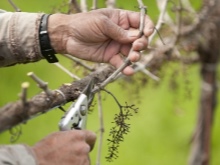
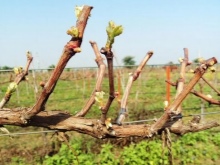
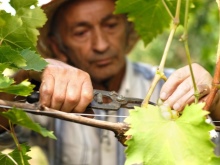
Required tools
There are several types of inventory used. Their use is justified by the different thickness of the removed parts of the plant. The universal pruning tool is a pruner, but to remove shoots that are more than 3 years old, it is better to use a bow saw, and for even thicker parts of the grapes, a hacksaw. To remove something where it is difficult to do it with an ordinary pruner, use a special tool - a delimber. And to trim shoots more than 1.5 cm thick, they take a pruner with two blades.
To care for grapes and carry out almost all types of formation, the installation of a trellis is required. Fruit-bearing vines are tied to it as the plant grows. The trellis is made of special wire and supports, which can be made of metal pipes. The thickness of those at the edges should be at least 50 mm, while the central ones will have a diameter of about 25 mm. Also, stakes made of wood can act as supports. They are located at a distance of about 3 m from each other. And the wire is started every 50 m.
The height of the trellis must be at least 2.5 m.
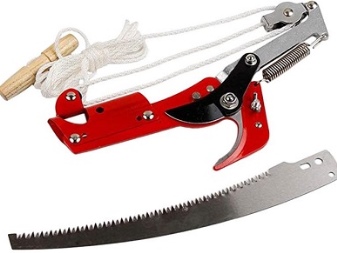
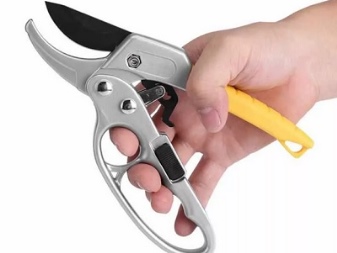
Common schemes
There are several popular cropping schemes, let's take a closer look at them.
Guyot type
The procedure takes place in four stages.
- The purpose of the first stage - cultivation of one developed shoot. To do this, during the growth process, all unnecessary stepsons are removed.
- During the summer all extraneous shoots are removedexcept for the most powerful. And by autumn it is cut to a length equal to 6 eyes.
- The next year after wintering set the trellis, to which the escape is tied. If the grapes have 2 strong shoots, they are bred horizontally in opposite directions from each other and fixed on the trellis. New growing shoots are formed in a horizontal position and tied to a wire.
- In the third year of the plant's life, harvest... At the fourth stage, at the end of autumn, stepchildren are cut off. Further in the spring and throughout the year, the grapes will grow by 10, and then 20 eyes upwards. The steps are repeated, but with the lengthening of the vine.
The Guyot method is suitable for regions with warm climates. It is often taken as a basis by novice growers of their southern regions.

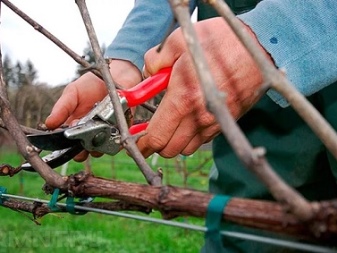
Fan method
This method has a significant difference: in the process of formation, not 1-2 strong shoots are left, but 4-8. They are located like a fan (hence the name) in the same plane. But they branch out in different directions and at the same distance.
Closer to the ground, the plant has unopened buds in a dormant state: they are needed to restore the plant when the main shoots die. For the first 2 years, the fan pattern is no different from the Guyot pattern. For 2 years of plant life, a trellis is also installed. Further, in the process of lengthening, secondary shoots are removed so that the bush does not thicken.
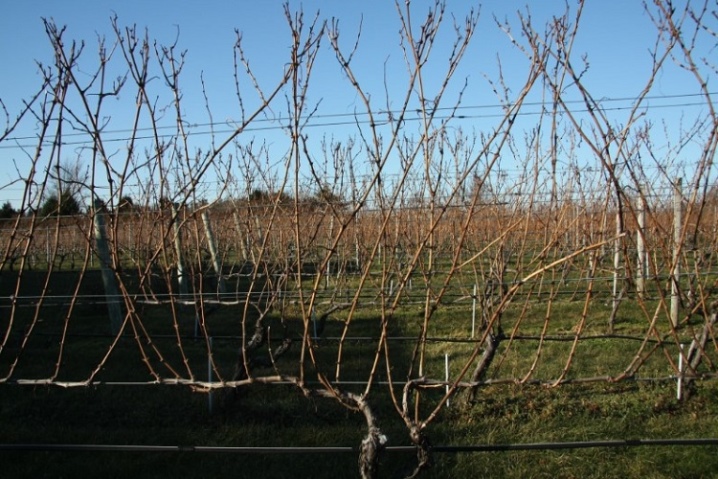
The harvest is first obtained in the 3rd year of the grape's life, when it has already grown 4 main sleeves. They reach about a meter in length. And in the girth - 1 cm. Tying the crop to a wire is required during the third growing season, do it at a distance of 40-60 cm from the ground. Then they trim the outside, leaving long shoots, but from the inside they cut it shorter. In the process of growing the vines, small new branches are cut off, only 2 or 3 shoots are left on the sleeves on top. They must be tied up. Harvest links are grown by the 5th year. In the process of forming, they are bred to 8 sleeves, then the plant is rejuvenated.
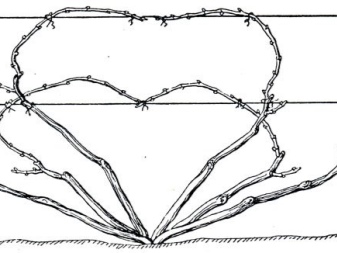
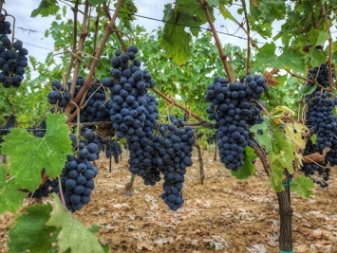
Small standard fan
This is a kind of fan trimming. A fairly new species was invented in Moscow. Hence its second name - the Moscow stampless fan. Suitable for small areas where grapes are grown. This scheme contributes to the convenience of sheltering plants for wintering, as well as stimulates fruiting and improves the taste of berries. This method facilitates the care of the bush and helps to rejuvenate the grapes, therefore it is suitable for northern regions with a cold climate.
This method of formation allows you to reduce the distance between seedlings to 0.5-1 m, and between rows - to 1.5-2 m. Sometimes you can use a one-sided fan scheme to further reduce the distance between plantings. Also, a half fan is used to form middle-aged plants when they are already stiff and difficult to form. The small stamper fan is performed in 4 steps, which last the same number of years.
In addition to pruning, timely watering and feeding of the plant is carried out.

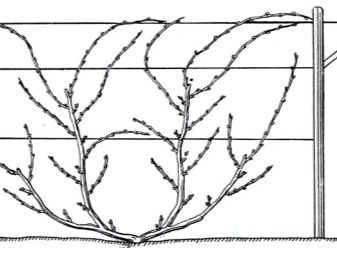
The step-by-step instructions for cropping are as follows.
- First year. The goal is to get two strong shoots at the end of the year. If, after planting, not 2 shoots begin to develop on the bush, but a larger number, for example, 4-6, then the extra ones are removed.
- Second year. The goal is to grow 4 strong vines, which will be the main arms. In the spring, all new shoots are removed in order to leave the necessary substances basic. And in the middle of autumn, the main pruning is done.To do this, the plant is leaned at an angle against the lower wire of the trellis (the angle will be no more than 45 degrees) and cut off above it at a distance of 15 cm.
- Third year. The goal is the formation of a fruit link. To do this, we grow two vines on each arm. In the spring, remove all shoots from below, except for one, which we leave to form a replacement knot. We cut it off, leaving 2-3 eyes. On each formed sleeve, we leave 2 strong shoots on top: these will be the fruiting vines. In the fall, we cut off the lower fruiting vines on each sleeve, leaving 3 eyes on them. And we cut off the top ones, leaving 6 eyes each. Each sleeve should have one short knot and one cut off top shoot.
- Fourth year. The bush must acquire its final appearance, which was achieved by this pruning. In the spring, each upper shoot is fixed horizontally on a trellis. During the entire period of growth of new shoots on fruiting, and then flowering and fruiting, the load on the plant is regulated. In young bushes, it should be less than in plants that have already fully bear fruit for several years. In the fall, on each sleeve again, only 1 lower knot and 1 upper cut off strong shoot are left.
During the next growing seasons, the bush is formed in the same way as in the previous 4 years. A loop is formed of actions repeated from year to year.

Cordon scheme
In the northern regions, due to the presence of shelter, an inclined cordon is suitable for grapes. The diagram of the inclined cordon is as follows.
- During the first year, one strong shoot is grown on the seedling, and in the fall it is pruned by about 10 eyes. This shoot should grow obliquely.
- In the second year after wintering, the shoot is tied at a distance of 60 cm to the trellis (to the wire from it), maintaining a slope to the ground of 35 degrees. When about 5-6 leaves bloom on the vine, all secondary shoots are removed on it, leaving only the upper ones.
- Between the first and second wire of the trellis there should be a length of 30 cm., and between the third and the second - already 60 cm. The upper shoots are tied up as they grow: first on the second, then on the third wire from the trellis. Sometimes a fourth wire may be required. From the third to the fourth, an indent of 75 cm is made.
- When fruiting, rationing is performed, leaving two clusters per two-year-old bush.
- By the end of the second year, 4 arrows are formed, cutting off 10-12 buds. Sleeve length should be no more than 1.5 m.
- After wintering for 3 years, all unnecessary shoots are removed, leaving only strong vines. The length of the segment between them should be equal to 30 cm.
- In the same year, the plant bears fruit for the first time. In autumn, pruning is carried out: the lower knots are formed, 2 eyes are left on them. On the upper ones it is worth leaving 4-5 eyes, and also making the slope of the vines.
- In the spring, a garter is carried out for 4 years: the lower knots are tied to the lower wire, and the upper shoots to the second. 4 shoots are left on the sleeves: 2 each on replacement knots and fruitful arrows.
- In the fall, create a fruiting link from the vine and the lower knot.
The cordon scheme has 2 more varieties: vertical and horizontal types of formation.
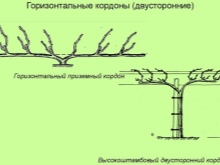

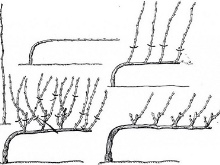
Vertical way
This method is suitable for forming varieties growing against arches or walls of arbors or pergolas.
- From the second year cut the plants so that 2 eyes remain on the fruiting shoots.
- Next year long pruning of both shoots must be done. They are bred in different directions. One is placed parallel to the wire to form the future sleeve, and the second is placed vertically upward. A fruitful vine will grow out of it. Then it is cut off by 2-3 eyes, and the sleeves are tied to the sides at an angle.
- 3 year the sleeves are cut into 3 eyes, and the vine itself (after 2 wires) - by 6.
- Then the molding goes like this: they form a cordon from the vine, and fertile vines from the lateral shoots.
- After winter, for 4 years, remove the entire vine.... And when the grapes grow to the desired length, all shoots (except those that are on the side) are cut out.
For example, Isabella grapes are formed in this way.

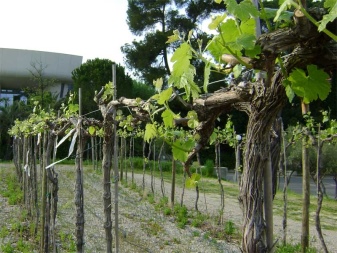
Horizontal
It is carried out as follows.
- One strong shoot is grown from a seedling. The rest are cut off.
- A year later (after winter), a horizontal garter is produced. Inflorescences are left 2, no more.
- In autumn, 3 shoots are left on one sleeve. Of these, the lower one is left as a twig, the other two are necessary for growing vines.
- In the third year, in March-April, every 2 vines (fruitful) are tied up (vertically) to the support wire. By the end of summer, about 7 young vines will grow on the bush. Further, their formation is carried out according to the Guyot scheme.
- In the fourth year in the spring, the entire cordon is tied up parallel to the wire.
A powerful, mature vine is formed over three years.
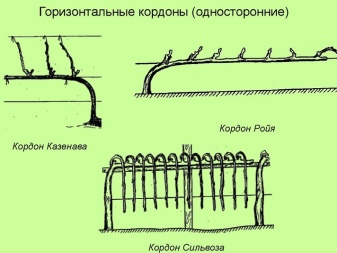
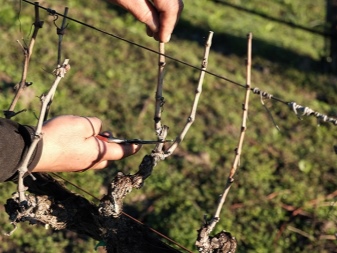
There is also an interesting option for beginners.
- Any pruning begins at the top of the vine. Shoots 50-80 cm long are cut during the fall. If the shoots have grown longer than 80 cm, then they are reduced by 10% and all the shoots are cut off on the sides.
- After leaf fall, 2 of the healthiest and strongest shoots are left, their length will not be more than 80 cm. The lowest shoot is cut, leaving 3 eyes. Such an escape is called a replacement knot.
- From the side opposite, 6 to 11 eyes are left on the shoot, the rest are removed along with a part of the plant... The exact number of eyes left is calculated as follows: the diameter of the shoot is added with two spare buds. Thus, a fruit arrow is obtained.
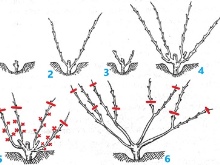
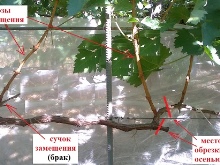
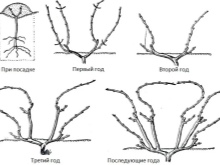
As a result of this method, several powerful trunks and shoots (sleeves) remain, on which there are unopened buds, thanks to which a bush will subsequently form. The degree of pruning intensity is determined by the thickness of the vine. The thicker it is, the more you should trim it.
Inexperienced in pruning, gardeners are advised to start with a formation pattern, which is called a standard four-arm fan, although Guyot's pattern can also be taken as a basis. It depends on the cultivated variety and the climatic conditions of the area. After pruning, the plants are treated with agents against diseases and pests, and they are also prepared for wintering. If the culture grows in regions with a cold climate, then the bushes are prepared for shelter. This is not required in areas with warm weather.

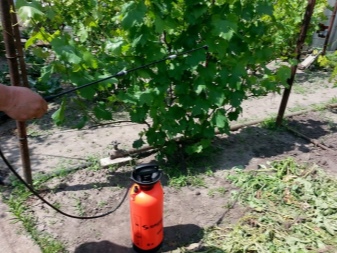
What does pruning depend on?
Formation depends on:
- climatic conditions;
- varieties, respectively, and the strength of the development of the bush;
Depending on the climate, one or another method of forming a bush is chosen. For example, the ease of using the covering material before wintering depends on climatic conditions. It is necessary to take into account the distinctive features of a particular pruning scheme, choosing it for a specific climate. For example, for northern regions with a cool climate, the scheme of a small stampless fan is suitable, and for more southern zones it is better to choose the Guyot method. The molding is chosen depending on the strength of growth, climatic orientation, pollination technology and the degree of yield. Each grape variety has its own characteristics, they differ from others. For example, for Kishmish grapes, it is better to choose the Guyot formation scheme, since this variety belongs to the southern ones and has low frost resistance.
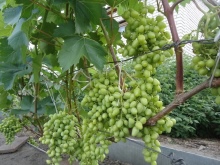

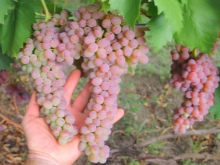
Pruning is also different in length.
- Long... With her, at least 9-10 eyes are left on fruiting vines. It is needed in those areas where there is a high risk of kidney death from frost.
- Short... 2-5 eyes are left here. It is used for varieties, the fruitful shoots of which are formed from the lower buds.
- Mixed... Fruiting shoots are left with 5-10 eyes, and on the replacement knot - 3. This pruning is suitable for any variety and is considered universal.
Correct pruning helps the plant to develop, pollinate and bear fruit in a timely manner. After all, the goal of any plant care procedures is to obtain a high-quality, rich harvest for several years.

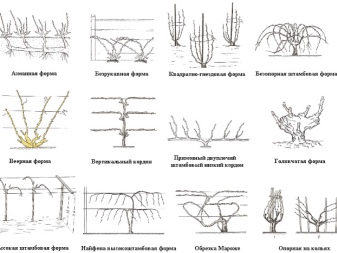
For information on how to form grapes correctly, see the next video.










The comment was sent successfully.